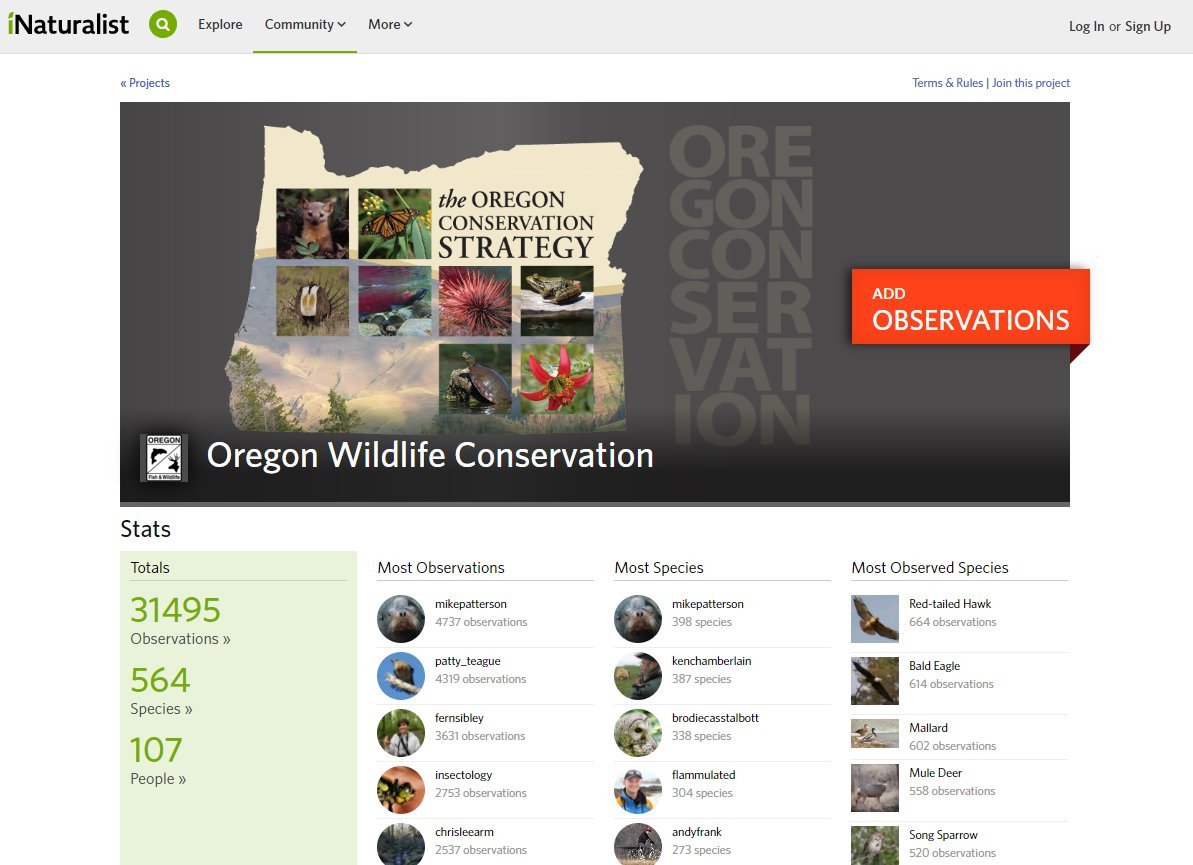ODFW’s iNaturalist project offers unique opportunities for community science

SALEM, Ore. (KTVZ) -- The Oregon Department of Fish and Wildlife recently launched the Oregon Wildlife Conservation project on the app iNaturalist to request the public’s help in documenting the presence and distribution of wildlife species across the state.
“ODFW is the agency responsible for protecting and enhancing Oregon’s wildlife populations,” said Andrea Hanson, ODFW Conservation Strategy Coordinator. “It’s not possible for ODFW to survey all wildlife species to monitor their distributions and population trends to identify priority species conservation and management needs. We need the public’s help to monitor their presence and distributions across the state,” added Hanson.
Biologists can use the data to enhance on-going wildlife research efforts, prioritize conservation actions and implement habitat restoration projects.
While ODFW is interested in all wildlife observations, scientists are particularly interested in observations of the wildlife Strategy Species (species of greatest conservation need) identified in the Oregon Conservation Strategy, which includes 17 amphibians, 58 birds, 29 mammals and five reptiles.
“What’s exciting about this tool is its accessibility to users of all skill levels. You don’t need to be an expert to contribute data,” said Emily VanWyk, ODFW Strategy Species Coordinator. “By submitting observations to the Oregon Wildlife Conservation project, you connect directly with biologists and conservationists who can help identify your observation and who may be able to use that data to promote ongoing conservation efforts in the state,” added VanWyk.
ODFW conservation biologists encourage everyone to contribute data to the project. Many activities that Oregonians already pursue can be coupled with a day of using the iNaturalist app such as bird watching, wildlife viewing, nature photography, as well as hunting, fishing and hiking.
“Exploring wildlife species in your own backyard is also a great way to use the tools on iNaturalist to figure out what you’ve found,” said Jade Keehn, ODFW Conservation Biologist.
The Oregon Wildlife Conservation project, created in 2020, is already helping biologists better understand Oregon wildlife species.
“Through iNaturalist observations, ODFW was able to document 19 new foothill yellow-legged frog observation locations,” added Keehn. This data will be part of a new study to more accurately document the core range of foothill yellow-legged frogs, which are a Strategy Species currently under review for listing under the federal Endangered Species Act.
Observations gleaned from iNaturalist user-submitted data may contribute to the current understanding of foothill yellow-legged frog occupancy and will allow ODFW biologists to focus efforts in areas of the historic range where no data exist to describe their current presence.
iNaturalist data is also being used to help support ongoing conservation projects, like the Oregon Connectivity Assessment and Mapping Project. OCAMP aims to link landscapes for wildlife by identifying habitat connectivity throughout the state for 54 of Oregon’s native wildlife species. Northern red-legged frog is one of these species, and there are more than 500 observations of northern red-legged frog in Oregon logged in iNaturalist. More than 100 of these observations have already been shared directly with ODFW’s iNaturalist project.